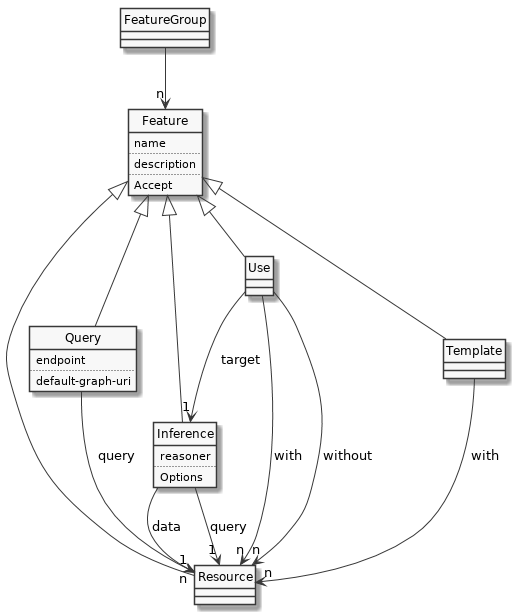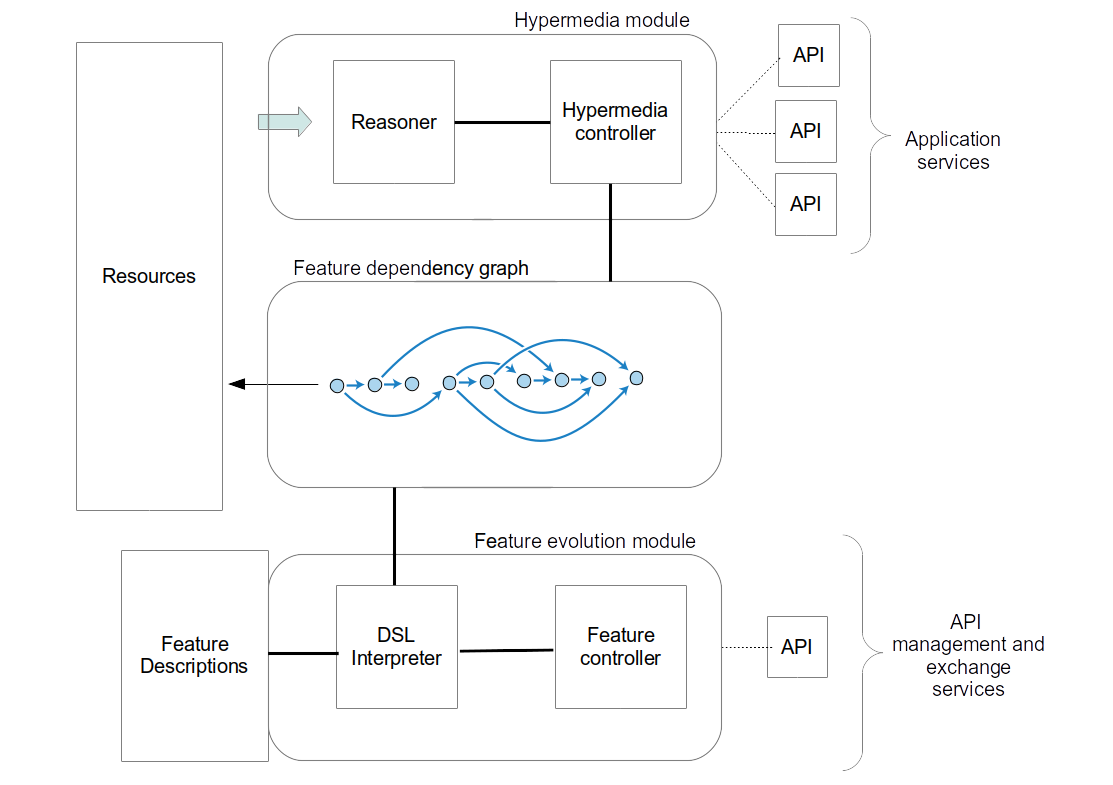Demo that generates APIs from data and N3 rules. In this example, links are specified through JSON files and responses are generated applying N3 rules to RDF data.
The HES POC use N3 Logic. Notation N3 is a rule-based language defined as a superset of turtle that adds support for additional constructs. Is possible, for instance, to describe a set of rules to generate new knowledge, extending the data.
{
?animal :eats :meat.
?animal :eats :plants.
}
=>
{
?animal a :omnivore.
}.
The rules are stated using curly brackets {} and the implication symbol =>.
A typical reasoning operation combines data with rules and a query. The results are then serialized in Json-LD to be consumed by applications. An agent might also expose their knowledge artifacts and features through the URLs.
Other things can be specified directly in the json, such as queries to REST endpoints or rendering an application
By default, the API is defined using index.json files to be recursively read from a directory. There are some examples.
Note: (To try the application without installing all this, you can use the Docker version below)
API
Dependency graph
Built-in applications:
First of all, you need to install the EYE reasoner (Windows – OS X – Linux).
Alternatively, install it from the source
(make sure that you can run this using '/bin/sh eye,' or set the EYE_PATH environment variable)
Then, install the server package as follows:
$ [sudo] npm -g install hes-agenthes serve <directory>
More options with
hes --help
The workspace folder contains examples on what kind of things can be declared.
To see the results do:
hes serve ./workspace
and point your browser to:
http://localhost:3000
Then 'follow the links'
Operations and dependency graph:
http://localhost:3000/dataspaces/operations
docker run --name=hes-agent -p 3000:3000 -v $PWD/workspace:/usr/src/app/workspace cristianvasquez/hes-agent -t
Running your image with -d runs the container in detached mode, leaving the container running in the background. The -p flag redirects a public port to a private port inside the container. The -v flag mounts a directory to a directory inside the container.
If you need to go into the container you can use the exec command:
docker exec -it hes /bin/bash
docker rm -f hes-agent
curl -i localhost:3000
docker build . -t YOUR_USERNAME/hes-agent
(to build a clean image from scratch use the --no-cache option)

